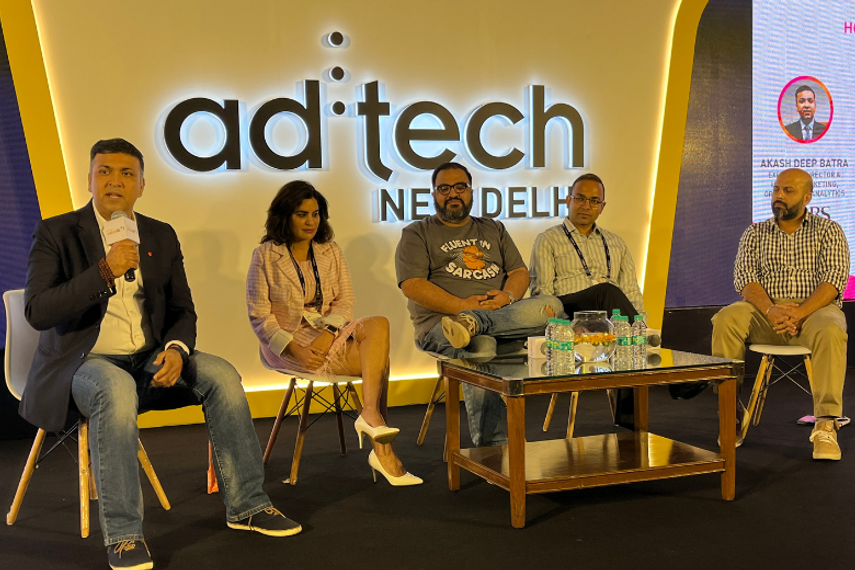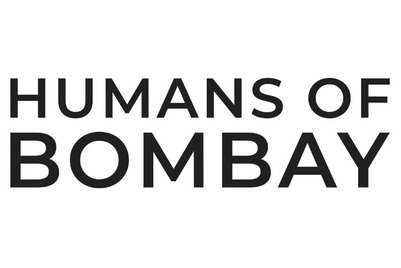Day two of Ad:Tech 2023 saw Ainara Kaur, co-founder, Belora Paris; Vinay Singh, founding partner, Fireside Ventures; Utsav Malhotra, chief operating officer, Noise and Vipul Gupta, founder and director, Re’equil spoke about how new-age brands are breaking through the clutter to find their standing.
The panel which was titled ‘How new-age brands are challenging the status-quo’ was moderated by Akash Deep Batra, executive director and head of marketing, growth, CX and analytics, DBS.
What big brands are not getting right
Batra started off by asking the panellists what they think big brands are doing wrong. Answering this question, Kaur stated that there was nothing wrong with big brands and that the only difference was that new-age brands like hers are starting on a clean slate. “We have to focus not on what they are doing, but on what they’re not. When we’re looking at disruption, we have to go back and see how we can add more value to our customer’s lives across various touchpoints.”
She added that since traditional brands do not get into a few things, new-age brands can start finding the right areas.
Malhotra subtly addressed Noise as a ‘big’ brand, by stating that one out of three smartwatches that were sold in India were from his brand. “What worked for us beautifully is that we got incepted on our website, because that’s the only way we can understand what the consumer really wants,” he added.
Big vs small
Speaking about the difference between a small brand and a large organisation, Malhotra said, “We are willing to engage and connect with the consumers, listen to them and make those changes much faster than a large organisation would. Of course, in a small setup you’ve got less friction and hence you could make those decisions faster.”
Re’equil is a homegrown brand based out of Chandigarh. Fascinatingly, the brand was the brainchild of Gupta, whose hair loss problems led him to found the brand, whose name is short for ‘restore equilibrium’.
When asked about his story, he said, “I was desperately looking for products that would help me get my hair back. Every large brand advertising for that category was showing unrealistic expectations, which made me feel cheated as a consumer. I realised this was prevalent across categories. Brands have been playing on my desperation to get results. Hence, I started Re’equil, a product which restores equilibrium for your skin and hair, trust and expectations.”
Pointing out another difference between the larger and smaller brands, Kaur said, “The larger brands are creating one product and putting it in massive distribution. A new-age brand is creating or co-creating a product for a smaller segment. Since they listen a lot more, they have access to a lot more data.
Smaller the brand, bigger the understanding
Since smaller brands are the ones that seem to get into nuances of consumer understanding, Batra asked Singh where the big brands are lacking. “Big brands basically say that they have a certain product for you which is available at a store. They now ask you to deal with it and if you have a problem, there is no feedback that is asked.However, here’s a big opportunity for new-age brands.”
The advantage that new-age brands have is the close proximity to the consumers and the ability to co-create with them, according to Gupta. “Understanding what their pain points are and talking to them is the epitome. I consider D2C as nothing but my neighbourhood grocery store. The ability of my grocery store to interact with me, suggest products and to serve me well is what a D2C brand should see itself to be. If any brand, big or small can get on to those terms and set that relationship with their customers, half the battle is won.”
Speaking of what’s really working for small brands that are trying to make the big shift, Singh believed that there are many Indias and it cannot be treated as a market of one.
Proving his point, he shared, “Recently in Cochin, I met a very interesting founder who is building a hair care brand for curly haired people because genetically speaking, Malayalees have curly hair and there was no brand speaking to them. Suddenly, she was able to micro-segment, micro-target and understand things etc. We too are trying to figure out these niches which are a great way to get into the market.”
He added that as long as you have even a few customers who are loyal, it’s a very high-level and profitable business.
What authenticity means today
Speaking about what authenticity means, in today’s day and age, Singh stated that authenticity stands for familiarity. “For us, that review, rating and that feedback from the consumer is a packet of a lot of decisions. The fact is that the digital-first brands are closing the loop on delivering an experience seamlessly. The fact that you are bothered about an after sale and the fact that you know who you are selling to are real differentiators. This is unlike distribution networks which don’t know where the sale really happened.”
Addressing what might be a challenge for big brands, Malhotra explained how small brands look at reviews and other customer grievances, to see what exactly the customer is missing. “Small brands have to rely on tools and technology, which the bigger ones are overlooking,” he surmised.




.jpg&h=334&w=500&q=100&v=20250320&c=1)
.jpg&h=334&w=500&q=100&v=20250320&c=1)
.jpg&h=334&w=500&q=100&v=20250320&c=1)


.jpg&h=334&w=500&q=100&v=20250320&c=1)








.jpg&h=268&w=401&q=100&v=20250320&c=1)



